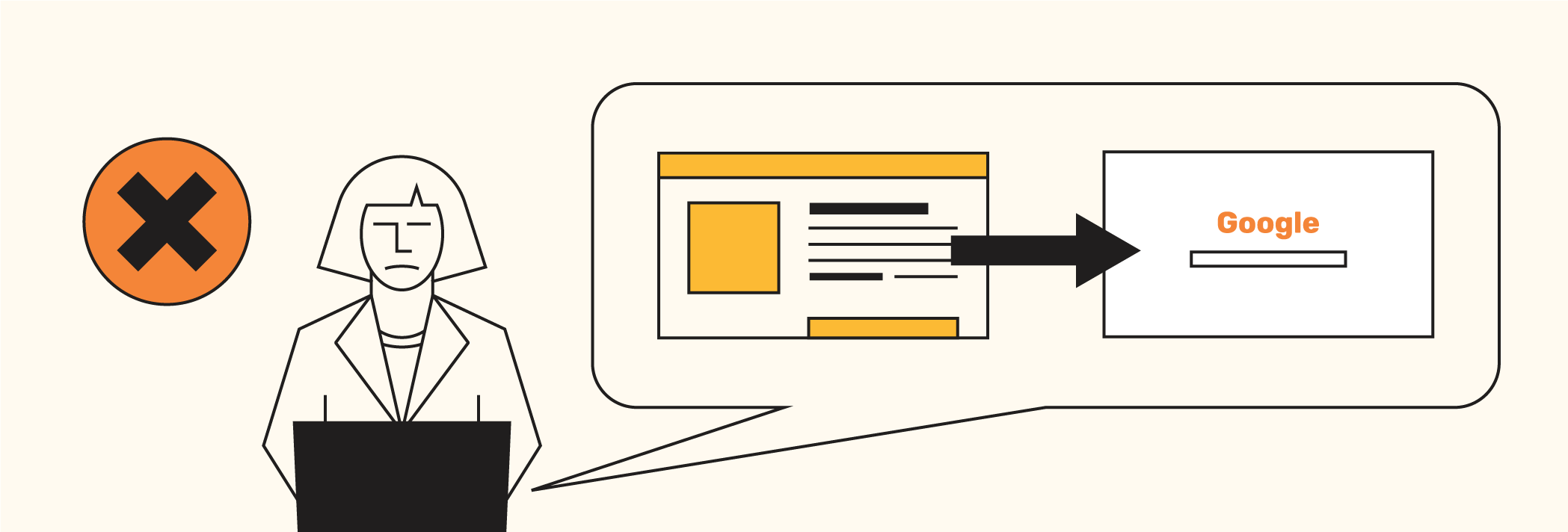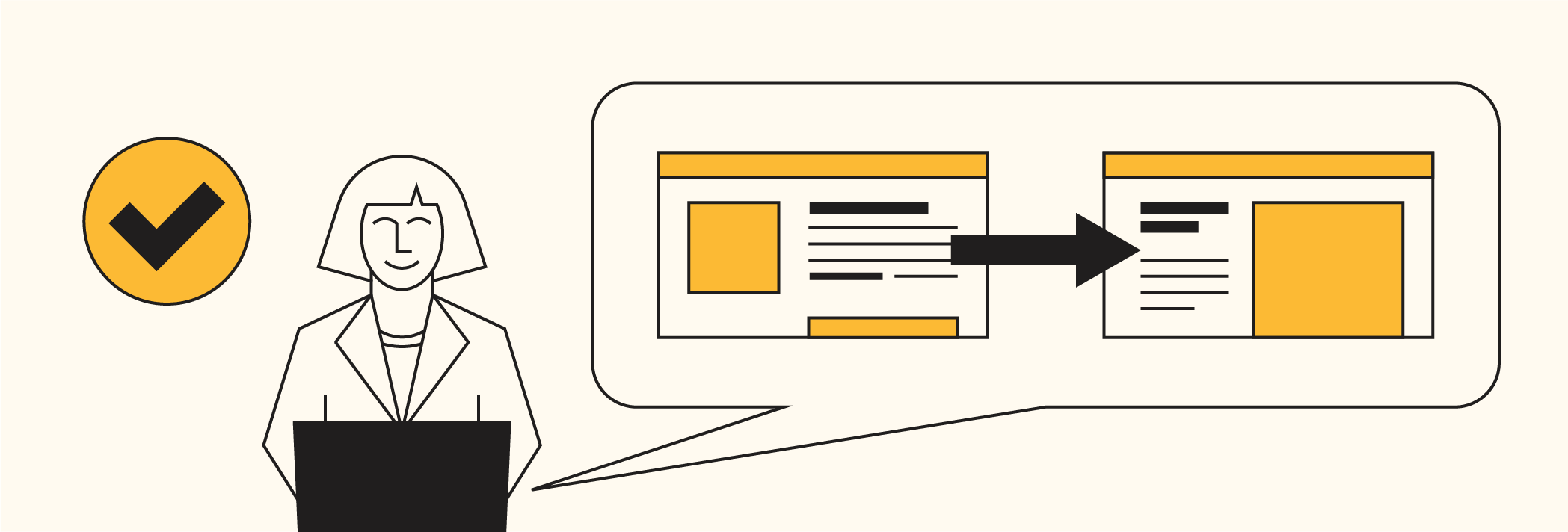The Financial Advisor’s Guide to Link Building
Justine Young
Senior Content Writer
Search
Subscribe
A link, at its most basic level, is a connection between two or more things. In SEO, link building is a strategy financial advisors can use to create connections not only within your own website, but to other important websites.
Okay, so linking is important, but how can you ensure your firm is doing it in the best possible way? We’ve got you covered. Read on to learn more about the different types of links, why they’re important, and how you can begin building links on your firm’s website today.
Newsletter Sign up
"*" indicates required fields
Short on time but don’t want to miss any of that sweet SEO info? Click here to watch Three Crowns CEO Johnny Sandquist give you the quick run-through on all things linking.
Why Is Linking Important?
Google uses a multitude of factors to determine search results, one of which is an algorithm aptly named “PageRank” after its creator, Larry Page. While PageRank is only a piece of the algorithm pie, it’s a pretty big one.
Although the algorithm is complex and has undergone many changes in recent decades, the basic process for users is fairly simple and can make a big difference in search engine results placement.
PageRank measures how valuable a website is by looking at the other web pages that link back to it. But it’s not just the number of pages – the quality of those other sites also matters. The idea is that if you have a good website, other good websites are probably referring back to yours regularly. Anyone can build a bunch of fake sites and link back to their own stuff (and plenty of people do that – they’re called “backlinking schemes”), so looking at the quality of the backlinks is important.
Google also pays attention to the links within your own website to better understand the relationship between your pages – so your links serve as a roadmap for search engines to crawl your site.
Links aren’t the only factor in your SEO (you already know about keywords) but they’re certainly important. Appropriate linking can help you gain organic SEO and give you that extra edge over your competitors.
Not All Links Are Created Equal
A link is a link, right?
Wrong!
There are actually several types of links you can use to up your SEO game, but they all fall under two main umbrellas:

-
Internal – Links that point from one page on your website to another page on your website, creating internal connections.
-
External – Links that point from your website to another website, or vice versa.
Within these two categories, you’ll find multiple types of links and strategies that can work together to impact your SEO.
Internal Links
If I know that this article will be published on the Three Crowns blog, I could include a link to another blog we’ve already posted.
(See what I just did? That’s an internal link.)
Likewise, I could link to our contact page. These would both be examples of internal links, because they take readers from one page on your website to another page that’s still on your website.

Why do these types of links matter? Besides making your content more accessible to your digital visitors, internal linking can also help Google better understand the relationship between your pages.
It can also reduce your site’s bounce rate. A bounce rate refers to the number of your website’s visitors that immediately leave the site. You want your audience to stay on your website as long as possible to reduce that number.
That’s not to say you should just throw links willy-nilly between your pages – internal linking should be done strategically.
Internal Linking in Action
Picture this: 30 year-old Sandra is searching the web for more information on retirement planning and she stumbles across a blog you wrote last year. While she’s reading the article, she gets caught up on the term “Roth conversion” – she’s heard of this before, but can’t remember exactly what it means.
Without any further cues from the article, Sandra exits your page and turns back to Google, searching for more information on Roth conversions.

Ideally, you would have an internal link right there to help Sandra out – such as a link to another article you’ve already written that details the ins and outs of Roth conversions. That way, Sandra saves time while also staying on your site longer. You’ve offered valuable information to Sandra, which builds her trust in your credibility as an authority on retirement planning.

To make the most of your internal linking strategy, you need to identify the most important pages on your website, such as your consultation page, contact portal, and your highest-value lead magnets. Then, make sure that each piece of content you publish points people back toward one or more of those pages.
A great internal linking strategy will resemble a funnel inward, keeping your audience members like Sandra engaged by continuously pointing them in the direction of more valuable content.
Topic cluster strategy
One great strategy for organizing your content? The topic cluster.
The topic cluster approach, also known as the pillar and cluster strategy, can serve as the foundation of your entire blogging strategy.
Some of the benefits of a topic cluster strategy are that it allows you to show the depth of your expertise and provides an architecture that gives direction as to where you should place your internal links.
The pillar pieces in this approach serve as a high-level overview of your topic, while the cluster subsections provide further detail. Think of the pillar as the introduction to your book, and the clusters as the following chapters.

For example, you could have a pillar piece titled, “The Complete Guide to Surviving Tax Season.” This piece could include an overview of all your recommendations, like what information your readers will need to file their taxes, tools they can use to ease the process, or even a list of important tax changes from the previous year that they should remember. Each of those recommendations would then link to more in-depth articles you’ve written on these particular topics.
Pillars can also be repurposed into a downloadable offer, stretching your content’s reach even further. Your pillar pieces should be easy to read and highly scannable, with plentiful internal links throughout. Hubspot offers several stellar examples of pillar pages – you can check some out here and here.
Topic clusters provide the type of structure that Google loves to see, and it also provides a solid foundation for setting your content strategy.
External Links
External links create connections between your website and other websites. There are two main types: inbound and outbound links.
Outbound Links

Outbound links occur when you link to other websites.
These types of links are especially useful when citing statistics or other information, when you want to reference tools your clients can use, or refer to current events.
When deciding who to give your outbound links to, your best bet is to find other high-quality websites that may eventually link back to you. It’s like a form of cyber-community building. Good examples for financial advisors include stock exchange websites and news websites.
This all begs the question: should you link to competitors?
The answer is, it depends (but probably not, unless you have some sort of partnership with them).
Inbound Links

Inbound links, also known as backlinks, are the holy grail of link building – they have the biggest potential SEO impact.
Backlinks occur when other web pages link back to your website. They show Google that others trust you as an authority. You don’t want your backlinks to come from just anyone – remember, Google takes into consideration the quality of the websites that are linking to you.
How Advisors Can Get More Inbound Links
Backlinks are the most valuable, but they’re also the hardest to come by. How can you get quality websites to link back to you rather than your competitors?
Here are some of the best strategies your firm can use to increase your backlinks:
Continuously develop relevant and timely content
Your readers can tell the difference between quality content and the fluffy stuff – and so can everyone else in the industry.
You need to create useful content. What can your firm add to the conversation that hasn’t already been said? Can you connect the dots between other relevant industry news?
Your content process should involve plenty of time set aside just for brainstorming. And while content creation can be a tedious process, it’s one of the best ways to build up your reputation as a subject matter expert on the web.

Network with those in your industry
While you’re climbing that cyberspace ladder, it may be a good idea to reach out to other centers of influence, or COIs in finance. These are people who have already established themselves and gained a substantial internet following, or who (like you) are also on their way upwards.
One way to make this a mutually beneficial transaction is to offer to trade guest posts. Consider reaching out to accountants, attorneys, realtors, estate planners, etc.
Approach local business newsletters and offer to contribute
Unless you live in the middle of Antarctica, chances are there are local organizations you could connect with that publish their own newsletters. From your city’s Chamber of Commerce to your local grocery store, there are plenty of options to explore. But keep in mind your audience when you pitch these ideas – different publications likely have different target demographics.
Not only will this strategy help you build connections within your community, but it could also lead to more backlinks to your website.
Pitch columns to other publications
There is no limit to the connections you can make with other online publications, and you really have nothing to lose – if you pitch your ideas and they turn you down, you just move on to other avenues of link building.
Although it might seem counterintuitive, you could even pitch to an online gossip magazine. These columns often feature news about celebrities and money, such as celebrities filing for bankruptcy, getting divorced, or dying without an estate plan. You could offer valuable financial insight into these situations.
Likewise, you could offer commentary on new financial laws and regulations that would affect the every-person’s life, like taxes, 401(k)s, and Social Security guidelines.
And keep an eye on your calendar for those timely events, like tax day. You may be able to write from a subject matter expert point of view around these important days. For example, people turning 70½ in 2020 will have to take their first required minimum distributions by April 1 of the year after they reach the age of 72.
Pitch your ideas to newspapers, city magazines and city blogs.
Be patient, quality backlinking takes time
If you don’t immediately see any changes in your metrics, don’t get discouraged – building quality backlinks can take a while.
In fact, one study from Moz showed that a single backlink can take up to 10 weeks to impact a business’ ranking in Google. Trust the process, and keep it consistent.
Anchor Text Matters
One last tip that’s key to making sure all your other linking efforts will pay off: anchor text.
Anchor text is the clickable part that readers see when they visit your website. And while it’s much nicer to see bright blue text than a long website name, naming your anchor text properly is key to ensuring your page is being crawled correctly by Google.
When you’re trying to rank for a particular keyword, you might think it’s a good idea to use that word in several or even all of the anchor text on a page – but that’s actually not recommended.
Just like the rest of your page, using the same keyword repeatedly in your anchor text is recognized as a form of keyword stuffing, and can hurt your SEO rankings.
Your best bet? Keep it natural. Anchor text should fit in organically with the surrounding text – it’s there to help when it’s needed, but leaves the content at the forefront.
Along with that, make sure the sites you’re linking to are relevant and timely for the reader and the anchor text. For example:
If I am talking about the value of a Roth IRA, I should probably link my anchor text to something that provides further insight into Roth IRAs, rather than a gif of a cute kitten.
There’s more to links than just hyperlinking some text – and as you can see, your linking strategy can have a huge impact on where you land in search results. Spend some time brainstorming how you can build backlinks to your site and figuring out how you can better leverage internal links – we promise you won’t be disappointed in the results.
Need a review of all things linking? We’ve got you covered. Click here to watch Three Crowns CEO Johnny Sandquist explore the ins and outs of SEO linking in a quick video.
Capture Your Audience with Three Crowns
Want help creating a link-building strategy that can help improve your standing in Google results? We do that! Click here to schedule a quick consultation call.
Newsletter Sign up
"*" indicates required fields